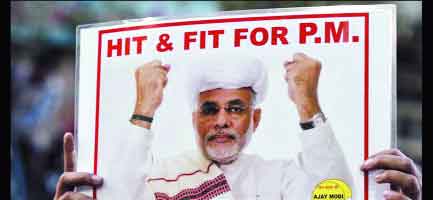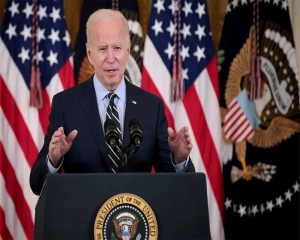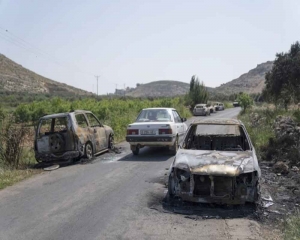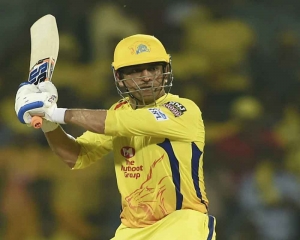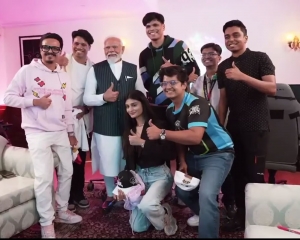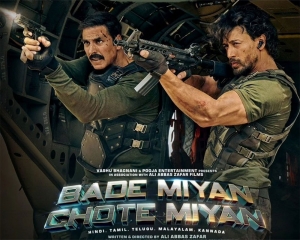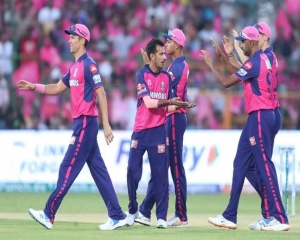‘Modi’s half-finished revolution requires another term’ is a more realistic selling proposition for 2019 in contrast to the mahagathbandhan’s thus far uninspiring counter-proposition
With just two months left for the general elections, the political sensex in India is heated, fluctuating and volatile. This is because newer entrants and federal bloc entities are striving to increase brand equity within the country’s re-calibrated demographics. India’s large and fragmented electorate, and its progressively widening diversity and pluralism, have made the country more complex and unwieldy to govern even by a party that ruled with a majority after 30 years, making the political marketplace a challenging one for 2019.
New-age elections are no longer fought offline on rugged turfs or over shrill television debates as brand-wars have shifted to the online space, where opinions are shaped. Because social media is mostly consumed by younger demographics, which comprise 65 per cent of the voting population, ad-spends of parties are on par in print and electronic media. And where the BJP held a first-mover advantage since 2014, political competitors have narrowed the gap in visibility, repartee and aggressive rebuttals not only on mainline media but also on platforms like Facebook, Twitter, YouTube and WhatsApp.
The product differentiator of the BJP versus ‘the Rest’ is that brand Modi has a nationally tried and tested leadership appeal. This is in contrast to incubator or trial and error regional brands, whose organisations or leaders have no prior experience in national governance (as in Bahujan Samaj Party chief Mayawati or an untested leader lacking administrative experience from a mainstream party, like Congress president Rahul Gandhi). Creating a powerful narrative around a political product needs branding strategies similar to a consumer durable company, where the consumers must feel tempted to buy a product they will have to live with for the next five years. And remember that the party that comes to power impacts national and individual fortunes of the multitude.
No brand, be it a consumer product, political party or a corporate entity, can retain lead or dominance indefinitely in the cluttered marketplace of politics. Political brands, like consumer ones, need continual upgrading to retain relevance. Brand Modi’s campaign of 2014 sold hope for a transformative ‘New India’, which worked at that time as a powerful motivator. A re-run of the same theme cannot have the same appeal in 2019. Instead, ‘Modi’s half-finished revolution requires another term’ is a more honest and realistic selling proposition for 2019 in contrast to the mahagathbandhan’s thus far uninspiring counter-proposition or the lack of it. According to brand experts, regional party aspirants lack clearly defined USPs in the consumers’ perception that would tempt them to buy into a regional leader to displace a towering national brand like Modi.
The elections of 2019 are no longer a simplistic assessment of two competing pan-Indian protagonists from India’s mainstream parties, Modi and Rahul Gandhi. Because depending on post-poll results, Mayawati or Trinamool Congress chief Mamata could well become default choices if the BJP or Congress fall terribly short of numbers and choose to sit in the Opposition benches, propping up a puppet regime.
In a “Modi versus the Rest”, there are two competing brands for the top slot against Modi. First, “the Rest,” or the Federal Front is a distinct product entity in itself. It’s an amorphous brand, minus the Congress or the BJP, comprising Samajwadi Party, BSP, Telugu Desam Party, Rashtriya Janata Dal, Nationalist Congress Party and TMC among others. Historically, such hybrid formations have been synonymous with instability and chaos. The selling points of the Federal Front brand will be assessed on the value proposition of the Common Minimum Programme (CMP) it puts forth as an alternative to the perceived flaws of brand Modi’s governance. It must offer viable economic solutions for a pick-up in investments and jobs and have long-term solutions to fix rural distress.
Voters are cynical about “hit and run” manifestos with no accountability post-Government formation. The USP of the Front will also lie in how the brand differentiates itself in its commitment to upholding institutional integrity of the vibrant pillars of democracy: A free Press, Central Bureau of Investigation, Comptroller and Auditor General of India, Enforcement Directorate and Reserve Bank of India. Because every party that came to power at the Centre or States has been guilty of the very same excesses and impropriety of fiddling with democratic institutions that Opposition flags as flawed features of brand Modi’s governance. Selling a brand’s ability to govern is like marketing a service product, similar to banking or insurance. Delivering good governance is a solemn and contractual service obligation between the ruler and the voter.
The second voter option is the Gandhi brand, and consequently a Congress-led alliance. Rahul is the prime mover in this space, though not the glue that binds the Opposition and lacks any empirical record of governance to gauge past performance that inspires a “buy.” Rahul has been a brand-in-the-making since 2004 that was formally test-marketed in the Gujarat elections in 2017 with partial success till he led the Congress to convincing wins in the politically significant Hindi heartland States in 2018.
Rahul’s personal branding for 2019 as the angry young man of Indian politics is a complete mis-match to real-life attributes. The Bachchan prototype in politics could well have appealed to the aspirational youth had he gained ascendance through meritocracy. His marketing strategy is deliberately confrontational and headline-grabbing, targetted to “defeat the BJP in the daily news cycle” through “hit and scoot” allegations in an attempt to maximise media space and brand visibility. As an anti-corruption crusader, upholding India’s institutional integrity, unemployment and agri-distress, a discerning voter would see through the claims of a party that suffered its worst rout in 2014 for those very issues Rahul champions in 2019.
Let’s not forget that Rahul, like his mother, had unfettered and equal access through proxy power during UPA’s 10 years to transform India. The fact is, he did nothing. So the rebel image does not quite add up. The Congress-led UPA ran a highly corrupt establishment with abject disdain for the integrity of democratic institutions starting with the office of the Prime Minister, CBI, CAG etc. Besides, an inconvenient truth seldom highlighted in present times is the cronyism Rahul alleges, and hopes to reap electoral dividends from by scamming the Rafael deal, is that the rise of the Ambanis coincided with the rule of Indira Gandhi, not with Modi’s ascendance. By 1999, the Reliance group had the largest net worth among all private companies in India, much before Modi came to power in Gujarat or in the capital.
Second, Rahul’s economic panacea of a Minimum Income Guarantee scheme is a flawed and financially prodigal strategy. Because it is based on assumptions that market-led economic growth will remain below-par, insufficient to raise millions out of poverty, so there is need to fall back on direct state-supported welfarism. Progressive growth is founded on policies that widen the economic pie, as compared to welfarist solutions which are based on redistribution of wealth, which is an interim solution to mitigating poverty and a constant drain on the exchequer.
Brand Modi is the “challenged” brand with the largest individual market share that reached saturation in 2014, and now suffers anticipated mid-cycle plateau. With his sweeping victory in 2014, the brand appeal resonated wider than its parent organisations, the BJP and RSS.
Despite a degree of voter-fatigue, displacing an overarching brand whose organisation and party dominates 19 Indian States is also a marketing challenge. Brand Modi retains top-of-the-mind recall through sustained visibility, being omnipresent in daily Government advertisements and regular personalised engagements through messaging updates via mail, Twitter and Mygov apps. It stands for unadulterated brand attributes of personal integrity. Voters, who buy into brand Modi in 2019, are not looking for new value-adds. Instead, brand loyalists are looking for renewal of commitments on how it can deliver on past promises and rectify the errors of his first tenure. As Modi’s brand attributes have been synonymous with decisive leadership, gauging from the patriotic fervour post the Pulwama attack, there would be a huge surge in popularity ratings should he choose to exercise military options, like going in for a limited war. Question is: Does he need to resort to knee-jerk reactions to prove his ‘josh’ by going to war in order to win the elections of 2019?
(The writer is author, columnist and Chairperson for National Committee on Financial Inclusion and Literacy for Women constituted at NITI Aayog)













